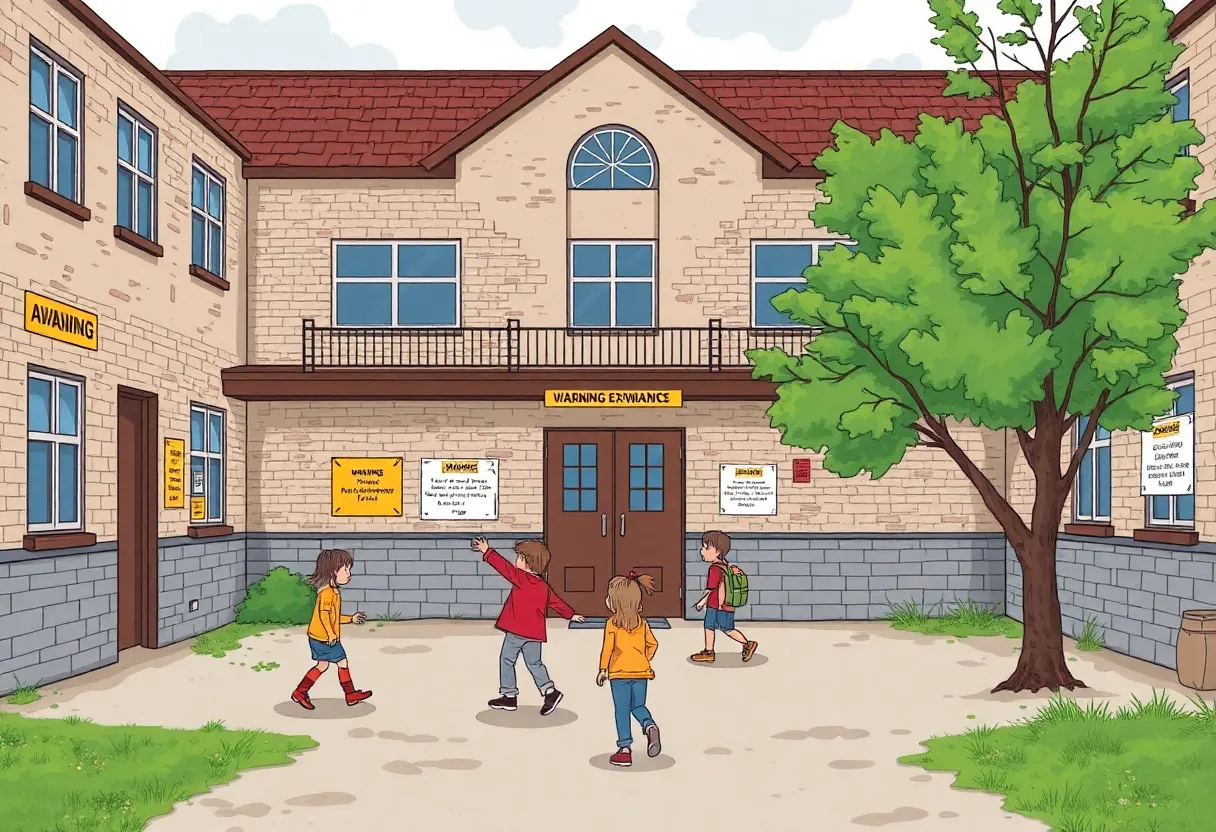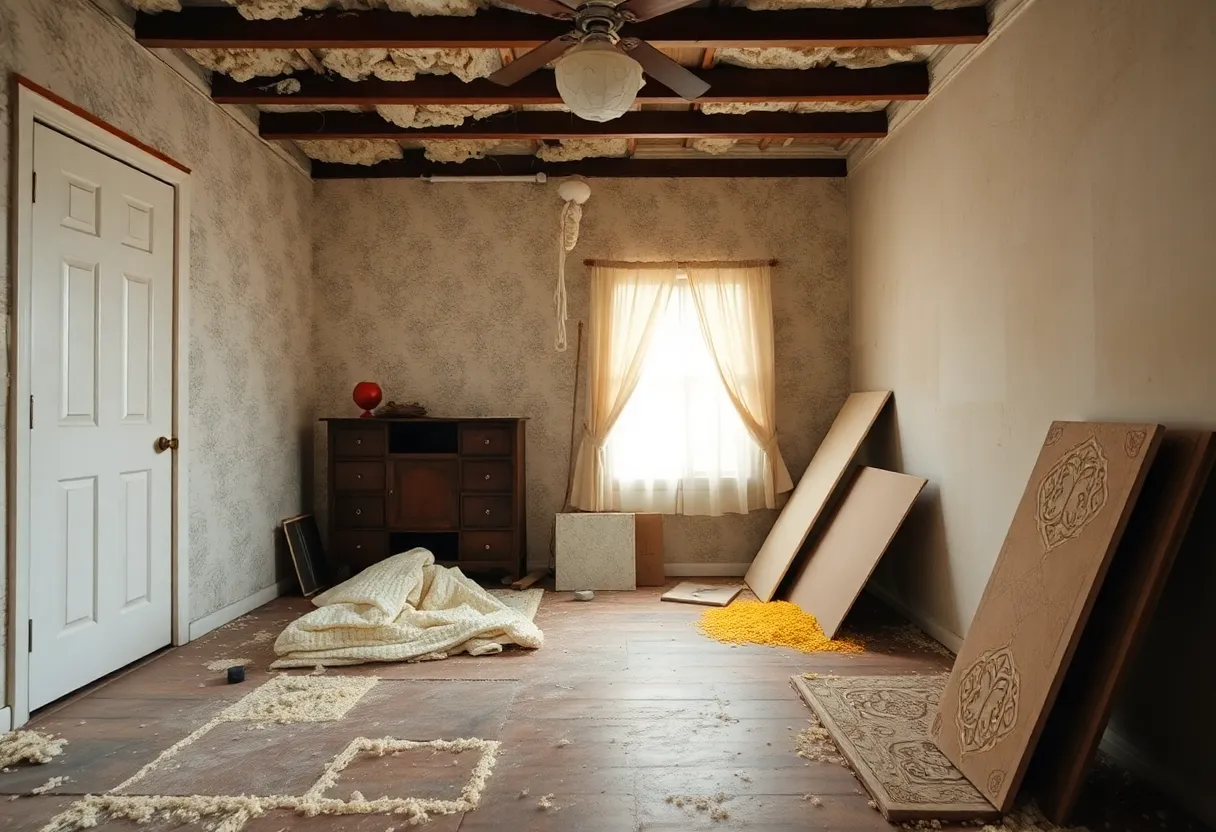News Summary
Millions of students and staff face health risks due to asbestos in older schools across the United States.
Asbestos Threats Lurking in America’s School Classrooms
Across the United States, a hidden health crisis lurks within the walls of older schools—asbestos exposure. Millions of students, teachers, and staff are unwittingly facing serious health risks due to the presence of this hazardous material in educational institutions built prior to the 1980s.
The Insidious Nature of Asbestos
As schools age, the potential for asbestos-containing materials (ACMs) to degrade increases, leading to the release of microscopic fibers into the air. These fibers can trigger severe health consequences, including asbestosis, lung cancer, and the deadly form of cancer known as mesothelioma. Shockingly, the Environmental Protection Agency (EPA) estimates that most educational facilities are not free from these hazardous materials.
A report released in 2015 revealed that over two-thirds of 5,309 local education agencies across 15 states acknowledged having asbestos in their schools. Structures built between 1950 and 1969 are most at risk since they utilized asbestos in nearly all building materials.
Risk Amplified for Younger Victims
What makes this situation even more alarming is that studies have shown that children are particularly vulnerable to the devastating effects of asbestos exposure. They face a significantly heightened lifetime risk of developing diseases such as mesothelioma compared to adults. A tragic irony exists, as the general public was largely unaware of the health dangers associated with asbestos in prior decades, leading to widespread neglect in addressing this hazardous threat in educational environments.
Struggles Amid Legislative Framework
The passage of the Asbestos Hazard Emergency Response Act (AHERA) in 1986 was a major step towards protecting students and faculty from asbestos exposure. However, the legislation mandates the removal of asbestos materials only if they are damaged. Unfortunately, a lack of funding for AHERA programs continues to allow these dangers to go unnoticed.
The EPA’s record from 2011 to 2015 shows distressing statistics—only 13% of the required nationwide inspections were conducted, raising legitimate concerns about the pervasive risks of asbestos in schools. While some regions, referred to as “waiver states,” exhibit better oversight regarding asbestos inspections, the inconsistent management varies significantly across different states.
Preventive Measures and Management Plans
Despite this alarming situation, there are methods to safely manage asbestos risks in educational facilities. Effective strategies such as repair, encapsulation, enclosure, and removal exist, with each tailored to the condition of the asbestos in place. Notably, asbestos removal is regarded as a last resort due to its high costs and the potential for increased exposure during the asbestos abatement process.
Schools are mandated to maintain an asbestos management plan under AHERA, which factors in information such as the date of the last inspection, the presence of asbestos, and management strategies. Parents concerned about their children’s safety should take the initiative to contact school administrators to obtain this critical information.
The Staggering Costs of Compliance
The financial implications of making public school facilities “ideal” in terms of asbestos management can escalate to billions of dollars. A report from Rhode Island estimated that $2.2 billion would be required for necessary improvements to address this issue adequately. Disturbingly, not all states are bound by USDA regulations, leading to significant gaps in school inspections and management related to asbestos.
Legal Wranglings and Compensation
Colleges and universities are also obligated to adhere to stringent regulations concerning asbestos, including the execution of building surveys and comprehensive warnings to ensure safety for students and staff. Institutions that fail to comply with these asbestos regulations and provoke exposure could face considerable fines and legal liabilities.
For victims of asbestos-related diseases, pursuing asbestos lawsuits can provide essential compensation to cover mounting medical bills and lost wages. These unfortunate individuals highlight the tragic outcomes of a battle with asbestos-related illnesses.
Concluding Thoughts
In conclusion, the rising awareness of asbestos hazards, coupled with a lack of oversight, raises dire questions about the safety of school environments across the nation. Coordinated efforts must be embraced to eliminate these coiled threats poised in the shadows—after all, every child deserves a safe and healthy learning environment free from the dangers of asbestos.
Deeper Dive: News & Info About This Topic
HERE Resources
Legal Trouble for Marion Company Over Asbestos Violations
Asbestos Discovery Shakes Trumbull Center Construction Project
Health Scare Among USS Keppler Veterans Linked to Asbestos Exposure
Retired Carpenter’s Battle with Mesothelioma Due to Asbestos Exposure
Local Business Owner Battles Cancer While Revitalizing Hamilton’s North End
The Surprising Impact of Soluble Mesothelin on Cancer Treatment
Builder Fined for Illegal Asbestos Removal in Cheadle
Major Asbestos Trial Resumes for Former Free State Premier Ace Magashule
Environmental Essentials Fuels Expansion with Latest Asbestos Consultancy Acquisition
The Asbestos Trial of Ace Magashule: A High-Stakes Courtroom Drama Unfolds



















